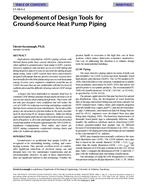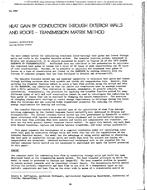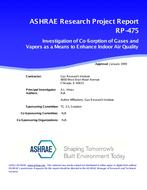Click here to purchase
This study investigates the optimization of the cooling tower condenser-water leaving temperature using a component- based model. This model consists of a chiller, a condenser-water pump, and two cooling towers. The chiller is modeled with a Gordon-Ng model for vapor-compression chillers with variable-condenser flow. The cooling tower is simulated with an effectiveness-NTU model. The pump power is calculated from the pump flow rate, pump head, and efficiency. This optimization problem is formulated as that of minimizing the total power of the chiller, pump, and fans by selecting an optimal cooling tower condenser-water leaving temperature at given weather conditions, chiller load, chilledwater leaving temperature, and condense-water flow rate. The model is applied in an example chiller CW system, and a generalized reduced gradient solver is used to search the optimal cooling tower approach setpoint. Simulation results show that the optimal cooling tower approach reset schedule can be approximated with two straight lines. Significant energy savings could be achieved if compared with the scenario with a constant cooling tower condenser-water leaving temperature. Further simulations show that the chilled-water leaving temperature, chiller part-load ratio, and the climate zones the plant locates in have a minor effect on the optimal approach reset schedule. A higher condenser-water flow rate per cooling ton leads to a higher optimal cooling tower approach, but this effect can be neglected for a system with a constant CW flow rate. The approach setpoint reset schedule that yields optimal control depends on the performance characteristics of the chiller and the cooling tower.
Citation: ASHRAE Transactions, Volume 117, Part 1, Las Vegas, NV
Product Details
- Published:
- 2011
- Number of Pages:
- 11
- File Size:
- 1 file , 5.5 MB
- Product Code(s):
- D-LV-11-027


